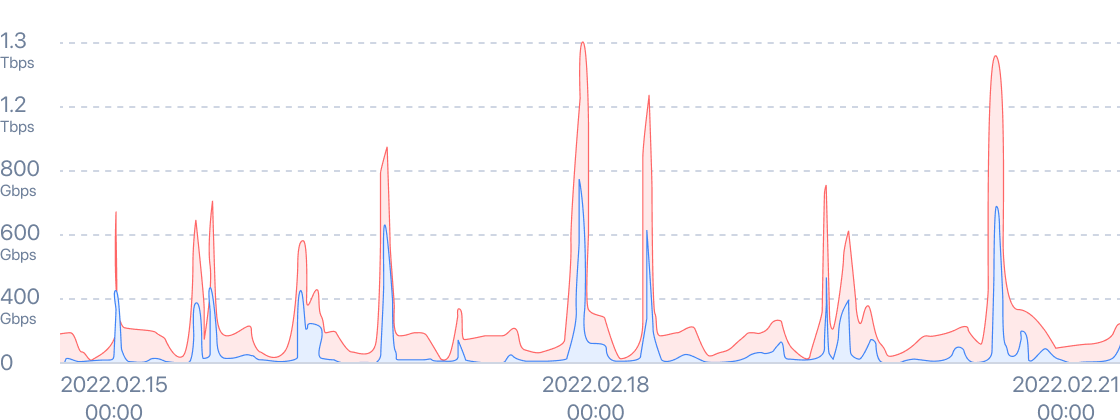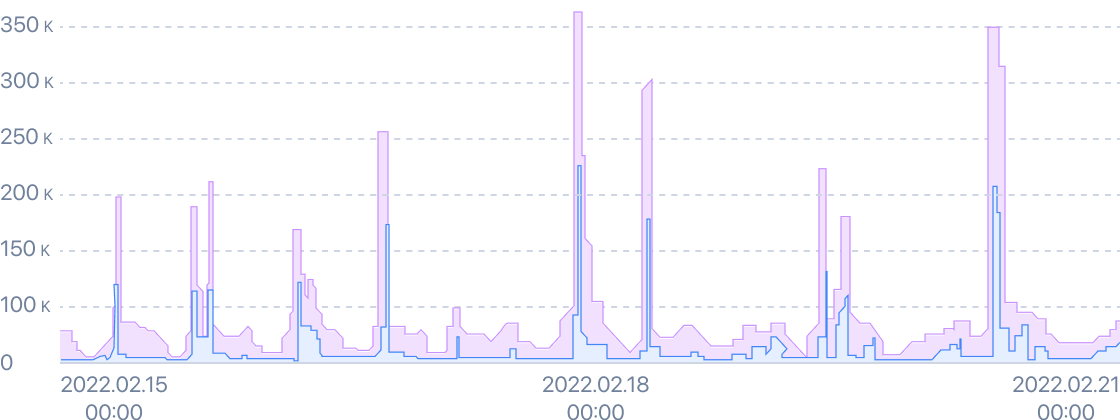Distributed video delivery on a series of peak streams: how Teleport Media delivered video at scale and maintained the bitrate for 3.5 million devices daily
February 4−20 2022, Beijing welcomed the XXIV Winter Olympic Games. Every day dozens of competitions were live-streamed on various video services around the world. According to experts, it was the largest online broadcasting of the Games ever held. Not a surprise, over last two years of the pandemic, the number of viewers' devices and subscriptions to OTT services increased significantly. And as a consequence, the video streaming infrastructure is developing by leaps and bounds to prove that OTT services can compete with traditional TV broadcasts and satisfy sports fans in real time with the best quality possible.
At the peak load, both in terms of the number of devices and the amount of traffic, the CDN strategy chosen by the OTT service plays a critical role in the quality of video delivery. In this article, we’d like to emphasise how Teleport Media’s distributed CDN helped clients deliver Beijing Games streams, and how we stood out from other connected CDN services.
Online broadcasting in numbers
This year, the digital streaming rate of the Olympics video came even closer to traditional TV broadcasts rate. The growing amount of gadgets and increasing Internet speed have contributed to this globally. The share of smart tvs also increased in comparison with the previous Games, because in this case the fans had the opportunity to watch catch up videos of the competitions on a big screen at a convenient time. Timo Lumme, director of marketing and television services at the International Olympic Committee, told reporters.
"In China, 8 out of 10 residents watched the Games, that’s hundreds of millions of people every day, and half of them on digital platforms. The leader in viewing the Olympics on digital platforms was expectedly the U.S. with 2 billion minutes of viewing recorded on Feb. 11th. Every Western European country also watched the Games. After four days of competition in Beijing, the number of broadcast hours in EU exceeded 2018 across all market segments," — said Mr. Lumme.
Teleport Media P2P CDN was among the primary methods of delivering Olympics on two major national video services throughout all days of the Beijing Games. The number of unique viewers on our network was up to 3,500,000 within a day. The numbers may seem modest compared to the U.S. and China, but there is a lot of work behind it. Let’s have a look a little closer at risks of delivery and types of delivery of large-scale online events.
One peak or a series of peaks — what are the risks?
Any video service is practically ready for any large-scale traffic real-time event predictable within a year, such as New Year’s Eve, a sports tournament, or a state press-conference. The expected traffic is purchased, servers are prepared, and in-house video infrastructure is upscaled in advance. These measures are primarily aimed at withstanding the peak audience without loss in quality, for a good price. After all, the urgent purchase of traffic costs a fortune, and technically the correction of a sudden CDN failure can only be done by reducing the quality of video.
And if it is easy to prepare for a single planned load, a series of regular peak loads is a stress test for an OTT service. Especially in times of social and political turbulence. What are the risks? It is difficult to recover from a single failure, but it is possible, considering the causes and prepare for the future, taking into account new configurations, having time to make it work. However, to recover from a failure before the next peak, which may be on the same day in a couple of hours, trying to restructure video delivery parameters of a large amount of traffic so quick, is technically impossible.
How Teleport Media delivered the Winter Olympics video in P2P
"The Olympics is a series of large online broadcasts in terms of the number of devices within the network and the amount of traffic consumed. That’s a challenging task for a digital video platform, so our clients usually have several connected CDNs. Traditional CDNs work as a starter for video content. Teleport Media CDN works as a smart download balancer — a distributor between the P2P network and the initial CDN download process, taking up to 80% of the traffic, and so avoiding a "bottleneck effect", — said Teleport Media CTO Alexey Klimenko.
"Team focus has been on maintaining an infrastructural approach of distributing traffic on the P2P network between devices. For us, each new device within the network is a node of redistribution of traffic, the point from which the player buffer is filled. By scaling up with new devices, the P2P network helps to maintain video bitrate and preserve the quality of the video played on the device. With larger broadcasts it’s much more likely that something can go wrong," — commented Alexei.
"Annual peak broadcasts are usually rare events, and how they go depends on how the video service is ready for them, and on a little bit of luck. And a series of events with peaks almost every day, and sometimes several times in a row in one day, is no longer luck, but a series of prepared technological victories. Due to the fact that distributed traffic scales the network without compromising the quality, even with a significant drop in traditional CDNs' bandwidth, when part of viewers consumed content from peering, we managed to avoid the decrease in video quality for all the viewers", — specified Alexey.
Bandwidth

Total users connected

To sum up, distributed video delivery is able to withstand any peaks, even unexpected and record-breaking by the number of connected devices without any loss in quality, because the traffic is not localized in one place. We have been working on this feature of the network for more than 4 years already, and year by year we improve network performance. This means we can build even better peer connections, and distribute even more traffic between connected devices, scaling effortlessly.
Follow this story on our website and blog. Sign up for Teleport Media dashboard to test unlimited traffic on your first 1000 viewers for FREE.
